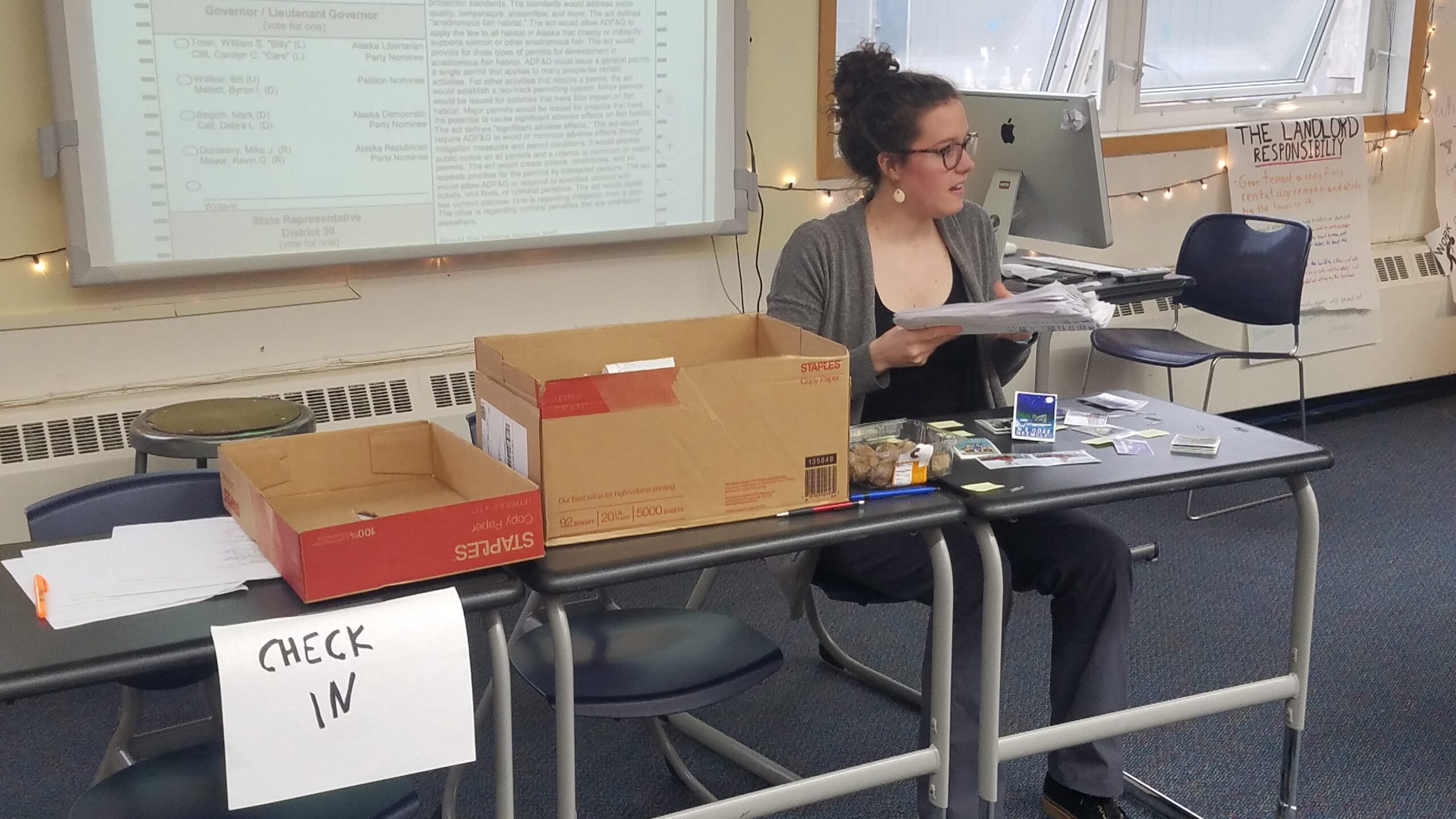Americans must be 18 to vote in the general election, but that didn’t stop the students at Nome-Beltz High school from getting involved in the democratic process on Tuesday. Social studies teachers Devin Tatro and Michael Hoyt organized a mock election to get students voting.
“You can line up (and) sign in with him, take a ballot, and go back to one of our voting booths, cast it in the ballot box.”
That’s Ms. Tatro explaining the procedure. The classroom is set up as close to possible as a real polling place. Students sign in with a student volunteer, take one of the sample ballots printed from the Division of Elections’ website, and walk to homemade voting booths constructed of red, white, and blue construction paper in the back of the room.
But Tuesday’s mock elections weren’t meant for students just to play or pretend. Before students went to their makeshift polls, Tatro asked them if their parents voted or if they had ever gone to vote with their parents. Not many hands went up. For many, this is their first experience at anything remotely resembling a polling place.
“My main objective is to de-mystify the process of voting, which I think happened for a few students. I had a few students say, ‘Wow. That’s so much easier than I thought it would be! I got this.’ I had a few 18-year old students, too, who had felt really nervous about voting, and then after class today they said, ‘OK, I’m going to (vote) after school now, I know what I’m doing.’”
In the days leading up to the 2018 general election on Tuesday, students spent time researching the candidates on third-party websites, the candidates’ own campaign sites, and different campaign commercials. The high schoolers spent time researching Ballot Measure One (“Stand for Salmon”), and middle schoolers were encouraged to ask them for information as they prepared to cast their ballot.
According to Tatro, for some students, it was more than just a school affair:
“I’ve had some kids tell me, ‘I told my parent who they should vote for,’ or ‘my parent asked me who they should vote for,’ and they talked about it.”
Election results at Nome-Beltz, like actual returns in the Bering Strait region, added up a bit differently than around the rest of the state. Beltz students elected Democrat Mark Begich for governor and independent Alyse Galvin to the U.S. House of Representatives and said “yes” on Ballot Measure 1.
No word yet on whether elections will be a regular event at the high school, but this year saw 146 young people cast their ballot at Nome-Beltz. Just like adult Alaskan voters, they got to walk away with one of the specially designed cartoon “I Voted” stickers — and a little donut treat.
Image at top: Nome-Beltz social studies teacher Devin Tatro collects the ballots. Photo: Emily Hofstaedter, KNOM.






